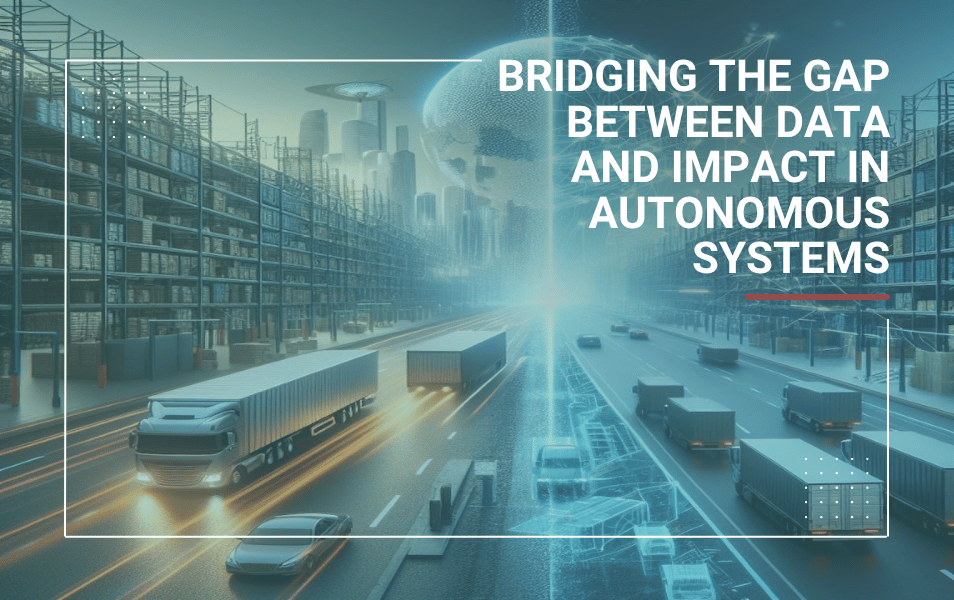Introduction
The journey from raw Data to Impactful decisions is a transformative process that shapes the evolution of various industries. In the context of warehouse logistics and autonomous driving on public roads, understanding the DIVI pipeline—comprising Data, Information, Value, and Impact—serves as a beacon for innovation. As we slowly transition from Level 2 Advanced Driver Assistance Systems (ADAS) to fully autonomous, hands-off, and eyes-off driving applications, and as Automated Mobile Robots (AMRs) and drones become more prevalent, understanding the differences between Value and making an Impact is crucial.
This article delves into the significance of extracting Valuable information from Data and how it propels advancements in autonomous technologies, with a focus on real-world applications and benefits.
Information extraction and value creation
The transition from raw Data to actionable Information is where Value is created. For ADAS systems, this means interpreting sensor data to identify obstacles, predict the behaviour of other road users, and make real-time navigation decisions. The Value lies in enhancing safety and reducing the cognitive load on drivers. For instance, Tesla’s Autopilot and Waymo’s autonomous vehicles continuously refine their algorithms based on Data collected from various driving scenarios, leading to improved system performance and safety. For Tesla this means that this year they will complete the cross-country autonomous road trip it has planned since 2016, making it the second company to drive - in the US - coast to coast without human intervention.
In warehouses, AMRs equipped with sensors and machine learning algorithms can map their environment, optimize routes, and collaborate with humans to enhance productivity. An example is Amazon’s deployment of Kiva robots , which has led to a 20% reduction in operating costs. The Information extracted from their operations not only streamlines the workflow but also provides insights into inventory management and process optimisation.
Impact on safety, efficiency, and operational effectiveness
The Impact of the Information derived from Data can be profound. In autonomous driving, the implementation of higher-level ADAS systems will surely contribute to a significant reduction in traffic accidents. According to a study by the Insurance Institute for Highway Safety, crash rates can drop by up to 40% with the widespread adoption of ADAS features.
In the context of warehouses, the integration of AMRs leads to a safer work environment by reducing the risk of injuries associated with manual material handling. Moreover, the efficiency gains from optimised routing and inventory management directly translate into financial savings and faster delivery times, thereby enhancing customer satisfaction.
Case studies and real-world scenarios
To illustrate the practical implications, consider the case of Volvo Trucks, which has been testing autonomous transport solutions in mining operations. Their self-driving trucks have not only increased productivity by 30% but also improved safety by operating in hazardous environments without the need for human drivers.
Another example is the use of drones for inventory management in warehouses. 4 years ago, supply chain solution provider DSV in a collaboration with startup Verity tested drones that can scan and check inventory in the Netherlands, reducing the time it takes to check stock from by 80% — demonstrating the tangible benefits of leveraging the DIVI pipeline in real-world applications.
Conclusion
Understanding the concepts and challenges mentioned in the articles I wrote about the DIVI pipeline are pivotal in transforming the landscape of autonomous technologies in both warehouse logistics and public road transportation. By extracting Valuable information from Data, we can unlock improvements in safety, efficiency, and overall operational effectiveness.
Across the DIVI pipeline, the devil is in the details. And that’s exactly where I help my customers with crossing the bridge using an holistic view on technical aspects, shaping the innovation ecosystem, up to building business cases and connecting the 3 product horizons. How new technical concepts around Data work in new environments, and in the end really can make an Impact for a customer.
